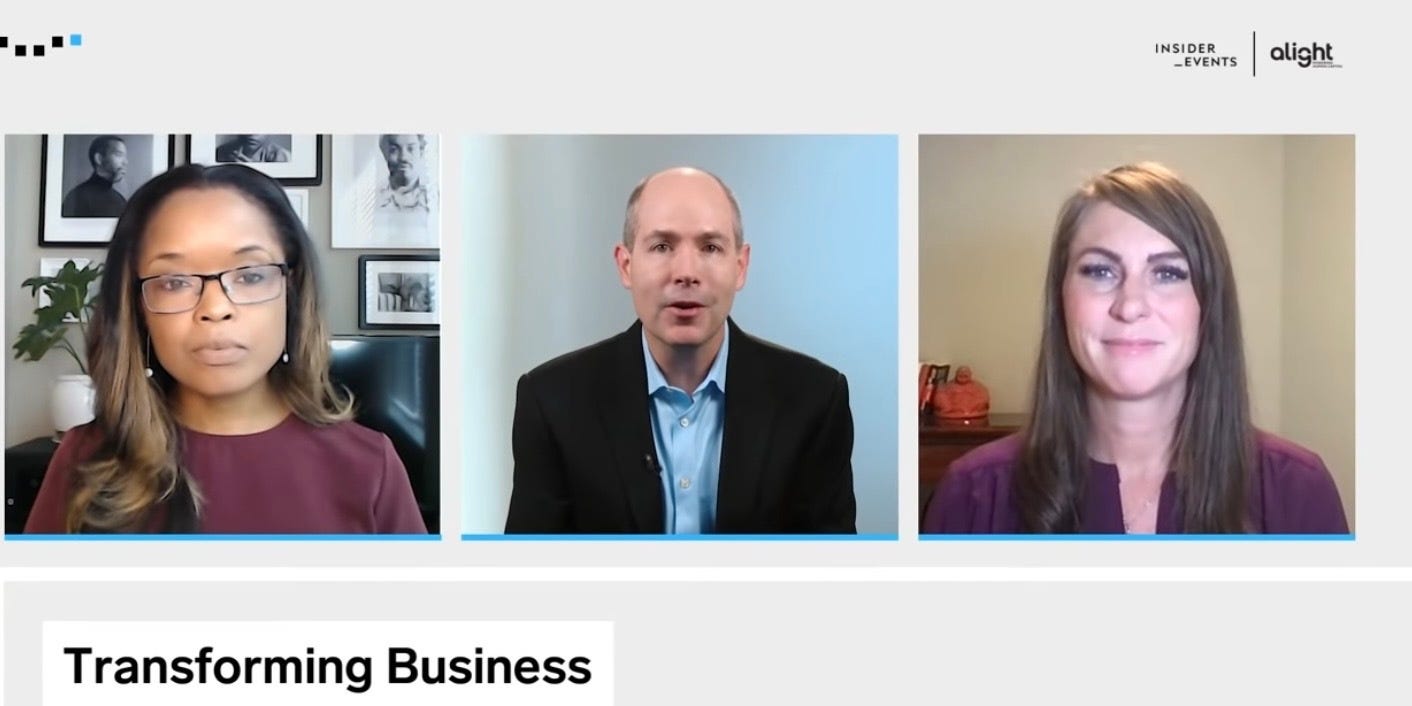
- Experts say business leaders must embrace transformation or risk getting left behind.
- As organizations are gutted by the Great Resignation, a people-centric approach is essential.
- Experts advise rethinking your company approach to how business transformation happens.
- This article is from Insider's "Transforming Business" event, presented by Alight, on December 9, 2021.
From return-to-work protocols and vaccination mandates to hybrid workforces, business leaders have had to embrace a rapid transformation of the workplace. But some experts say taking a people-centric approach — prioritizing what inspires and motivates people — could set businesses up for sustainable change.
In the panel discussion, presented by Alight Solutions, experts outlined specific ways in which business leaders can adopt change that avoids employee burnout, stimulates morale, and limits turnover.
"Businesses have to respond to change, whether it's technology change or innovation, or things going on in the environment," Colin Brennan, the chief customer officer at Alight Solutions, said during the panel discussion. "Throughout the course of time, we've seen the industrial revolution and the digital revolution, and now, arguably, we're in the people revolution."
As organizations across the country are gutted by a mass exodus of employees in what's now been dubbed "the Great Resignation," business leaders would be wise to adapt how they approach a workplace transformation around the needs of their employees, said Jennifer Moss, award-winning journalist, author, and workplace consultant.
A McKinsey survey suggests that for transformations to succeed, organizations need employee buy-in at all levels. There are many ways businesses can approach transformation to ease employee fatigue in what Brennan called the "people revolution."
Moss said that leaders don't have to overhaul their companies overnight. Instead, internal culture can be created — or modified — in increments. "I've been urging leaders to think about transformation as not having to be a linear move in a direction forward, but potentially laterally, thinking about things in a sideways definition around transformation instead of just in this linear movement toward a goal," she said. "You take parts of what you had originally that are working and then try to either augment that or change it. That could be paradigm shifting."
Additionally, employee burnout has to be considered when strategizing business transformation, Moss said. "Attrition is now a bottom-line issue for organizations who once took a 'growth at all cost' approach to business transformation."
Offering an employee-assistance program can help employees cope with change and a host of other interpersonal issues affecting their work performance. But making sure employees understand how to use their benefits is key.
"One of the biggest challenges we see is that employers offer a lot of benefits to their employees, and often, people don't know how to use them," Brennan said. "So it's all about change management that engages the employee holistically."

